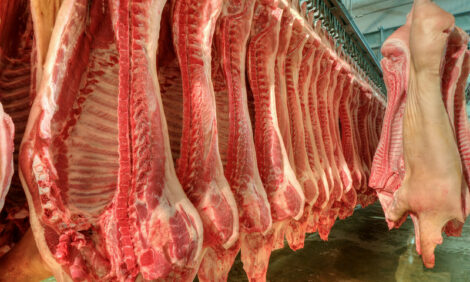



Maintain mycoplasma-negative herds with laryngeal swab tests from incoming gilts
Sow farms that have eradicated Mycoplasma hyopneumoniae (M. hyo) must continue surveillance to keep the pathogen out or the results will be devastating, according to Laura Bruner, DVM, Swine Vet Center (SVC), St. Peter, MN.“The most common entry is usually gilt introduction,” she said. “Mycoplasma can enter through the air but is less frequent.”
Right test for surveillance
Historically, serology tests were used to see if the incoming gilts were negative to M. hyo. But those tests are six weeks behind the infection, Bruner claims.
“In serology, we’re really looking at antibodies,” she explained. “Mycoplasma is a little bit unique in that we don’t start seeing antibodies in the serum until somewhere four to six weeks post-infection so I’m going to miss a really acute infection or a recent infection.”
Now she uses laryngeal swabs and M. hyo PCR (polymerase chain reaction) test to look for the actual bacteria in gilts. Bruner’s SVC colleague Alyssa Betlach, DVM, made this determination after conducting research to find the most accurate test and protocol for finding M. hyo in gilts.
“The laryngeal swabs tested for mycoplasma with PCR means we’re actually looking for the bacteria versus the response (to the bacteria) like serology does,” Bruner said.
Sampling techniques
The laryngeal swab requires a speculum to open the mouth and take a saliva sample from the larynx where saliva builds up. Bruner uses a regular spoon with an extension to collect the sample.
“We’re going closer to the respiratory tract and pulling out saliva that we can test for the bacteria,” Bruner said. “Ropes have been used in the past for mycoplasma, but the sensitivity is not very good… It does not pick up infections as well as laryngeal swabs.”
When a group of gilts comes into a facility, Bruner tests 30 animals and pools the tests into groups of three for a total of ten PCR tests.
The results?
Since implementing the test a year ago, she’s encountered a few suspects, but none positive to M. hyo. When she has a suspect test result, she goes back a week later and takes 60 samples, either laryngeal swabs or deep tracheal samples.
Testing for mycoplasma is not limited to gilts. “If we hear coughing on the sow farm, that will prompt us to test for mycoplasma, using the same method of the laryngeal swabs,” Bruner said. The same goes for early- or mid-finishing pigs. If a test is positive, she will go back to the sow farm and do more testing.
Bruner and her colleagues have conducted mycoplasma eradication on nearly 200,000 sows with an 80% success rate. These new surveillance protocols will help keep the successful herds negative.








